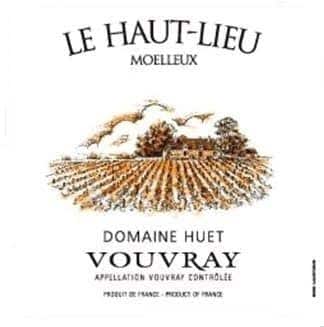Tim James: Why red wine is ultimately more collectible than white
By Christian Eedes, 19 October 2015
Christian’s report on the SA Sommelier Association’s tasting of old Cape whites got me pondering, and being pushed into questioning prejudices is always a good thing. Is Eben Sadie right in finding “zero logic” to most wine-drinkers’ inclination to both spend more on red wine than white and mature it for longer (the two are, of course, connected)? I don’t actually think so, on reflection, as a general rule.
 Eben mentions the longevity of Loire chenin and German Riesling, and certainly the freshest old wine I’ve ever had, red or white, apart from the special case of a 200-year old Constantia, was a 1924 Huet Le Haut Lieu Vouvray; admittedly, not many reds can compete with chenin and riesling at their best. Eben also instanced madeira and sherry, but the processes involved there – solera, cooking and fortification – surely rule them out of contention. Possibly the same exclusionary rigour might apply to traditional white Rioja, which he could have mentioned: there it seems that lengthy ageing in barrels helps viura achieve great ageability. Botrytised white wines can also age wonderfully – the sugar probably helping.
Eben mentions the longevity of Loire chenin and German Riesling, and certainly the freshest old wine I’ve ever had, red or white, apart from the special case of a 200-year old Constantia, was a 1924 Huet Le Haut Lieu Vouvray; admittedly, not many reds can compete with chenin and riesling at their best. Eben also instanced madeira and sherry, but the processes involved there – solera, cooking and fortification – surely rule them out of contention. Possibly the same exclusionary rigour might apply to traditional white Rioja, which he could have mentioned: there it seems that lengthy ageing in barrels helps viura achieve great ageability. Botrytised white wines can also age wonderfully – the sugar probably helping.
It’s much easier, however, to think of red varieties making (some) wines that are known for their ability to develop splendidly with many years in barrel and bottle: cabernets sauvignon and franc, nebbiolo, syrah, tempranillo, aglianico,merlot in Bordeaux – these tannic grapes would be the best-known, but I bet the list could go on much longer than the list of comparable white grapes.
I don’t accept Eben’s suggestion that “modern-era marketing drives undertaken by … Bordeaux, Tuscany and Napa” are significantly responsible for the reputational situation. Bordeaux has been the classic source of venerable wines (along with fortifieds like sherry, port and madeira) for a very long time, and for a very good reason, even if German Riesling outpriced it at 19th-century auctions. Napa gained its price-levels on the back of Bordeaux, via the magnificent, long-tested claims of cabernet sauvignon, a factor also relevant for the Supertuscans.
As to South Africa: judging by the annual tasting of old Cape wines organised by Michael Fridjhon each year before the Trophy Wine Show, most of which I’ve attended, local aged reds generally outperform local aged whites. At Michael’s tasting, reds must be more than 25 years old, whites only more than 15 – understandably, when you try them. Though, you might want to argue that this is a somewhat vicious circle: because of reputation, more red wines than whites have been kept and stored well; furthermore, reds were much more ambitiously made in 20th century South Africa (think of how chenin’s claims were ignored!).
But this latter train of thought does bring me to another point that is perhaps related to the main one. Most serious red wines not only benefit from ageing – they actually require it. There are undoubtedly many people who drink (sticking to locals) wines like Columella and Delaire Graff Cabernet Sauvignon Reserve when they’re very young, and few restaurants live up to their responsibility to offer mature bottles. To me, such wines give little pleasure in their youth, and the same applies to Bordeaux, Burgundy, Barolo, et al.
With even the grandest white wines, however, I can get great enjoyment from youngsters – they do not have the rough, immature rawness of great young reds. A mature Mosel Auslese is incomparable, but very young it is also lovely (unless heavily whacked with sulphur). Just this last week, to celebrate and make more meaningful a visit to its vineyard origin, I opened a bottle of Alheit Radio Lazarus 2014. I wouldn’t have dreamt of doing this with an equivalent red, and the rest of my bottles will remain in dark, cool quiet for many more years – but it was ready enough to give delight, all the way to the delicious dregs.
- Tim James is founder of Grape.co.za and contributes to various local and international wine publications. He is a taster (and associate editor) for Platter’s. His book Wines of South Africa – Tradition and Revolution appeared in 2013.








Comments
0 comment(s)
Please read our Comments Policy here.